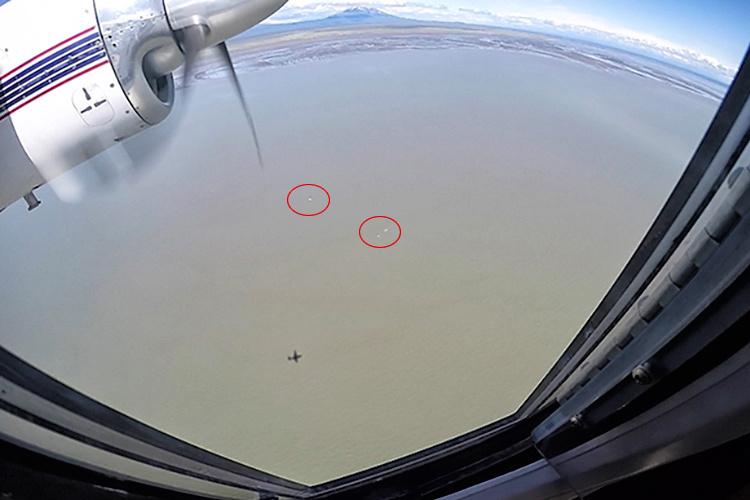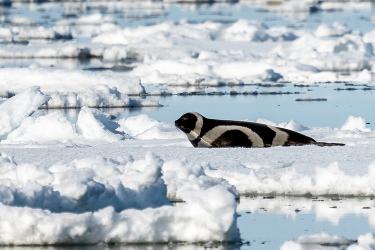We are testing new video cameras this year and comparing them to cameras we’ve used since 2011. With observers counting whales from the plane, you may wonder why we also video record the whales. Video allows for frame-by-frame viewing of the groups and allows an analyst (usually one of us in the field) to mark the surfacing of each individual whale. This type of analysis is particularly helpful with large, dense groups of whales which can overwhelm even experienced aerial observers.
We operate two HD video cameras side-by-side with one camera set at a wide angle to capture the entire group for group size estimates. The second camera is set to zoom in on a sub-sample of the beluga group to capture smaller, darker whales that are hard to see and distinguish in the wide angle view.
Meet the Bloggers
Kim Shelden is a Marine Biologist in the Cetacean Assessment and Ecology Program at the Alaska Fisheries Science Center's Marine Mammal Laboratory. Kim has been a part of the Cook Inlet beluga aerial survey project since it began in 1993.
Starting as a videographer, observer, and data recorder, she took over as Chief Scientist in August 2007. Kim has logged over 740 hours flying surveys over Cook Inlet.
Julie Mocklin is a NOAA Fisheries affiliate through the Joint Institute for the Study of the Atmosphere and Ocean at the University of Washington. Julie began her career as a whale watch naturalist and quickly moved on to conducting right whale and harbor porpoise aerial surveys in the Gulf of Maine.
Julie began working for the Marine Mammal Lab as a volunteer in 2002 and became part of the bowhead group in 2005. In the interim, she flew harbor porpoise surveys in Southeast Alaska and was the boat driver for a study on energetics and behavior of southern resident killer whales for the Northwest Fisheries Science Center, NOAA Fisheries.
Julie's career has focused on aerial surveys and obtaining photographs of cetaceans for abundance estimates and life history data. She got her Masters of Science at the University of Washington, using aerial photos to learn about bowhead whale feeding behavior.
Julie has worked as observer and videographer for the Cook Inlet beluga aerial surveys intermittently since 2007.
Linda Vate Brattstrom is a NOAA Fisheries affiliate through the Joint Institute for the Study of the Atmosphere and Ocean at the University of Washington.
Linda started at Alaska Fisheries Science Center in 2007 doing beluga video analysis. Since then she's been working on both beluga and bowhead whale projects.
One of her favorite aspects of her job is to take part in the Cook Inlet beluga surveys.
Christy Sims is a NOAA Fisheries affiliate through the Joint Institute for the Study of the Atmosphere and Ocean at the University of Washington (UW).
Christy started as a photo-identification volunteer at the Alaska Fisheries Science Center in 1998, and has been working with the Cook Inlet beluga whale project since completing her Masters of Marine Affairs at the UW in 2001. She has worked as observer and videographer on the Cook Inlet beluga aerial surveys since 2003.
When she isn't analyzing video or designing and managing databases, Christy enjoys bringing her co-workers her experimental bake-off recipes, hanging out with family and friends, playing outdoors, reading and travelling.









